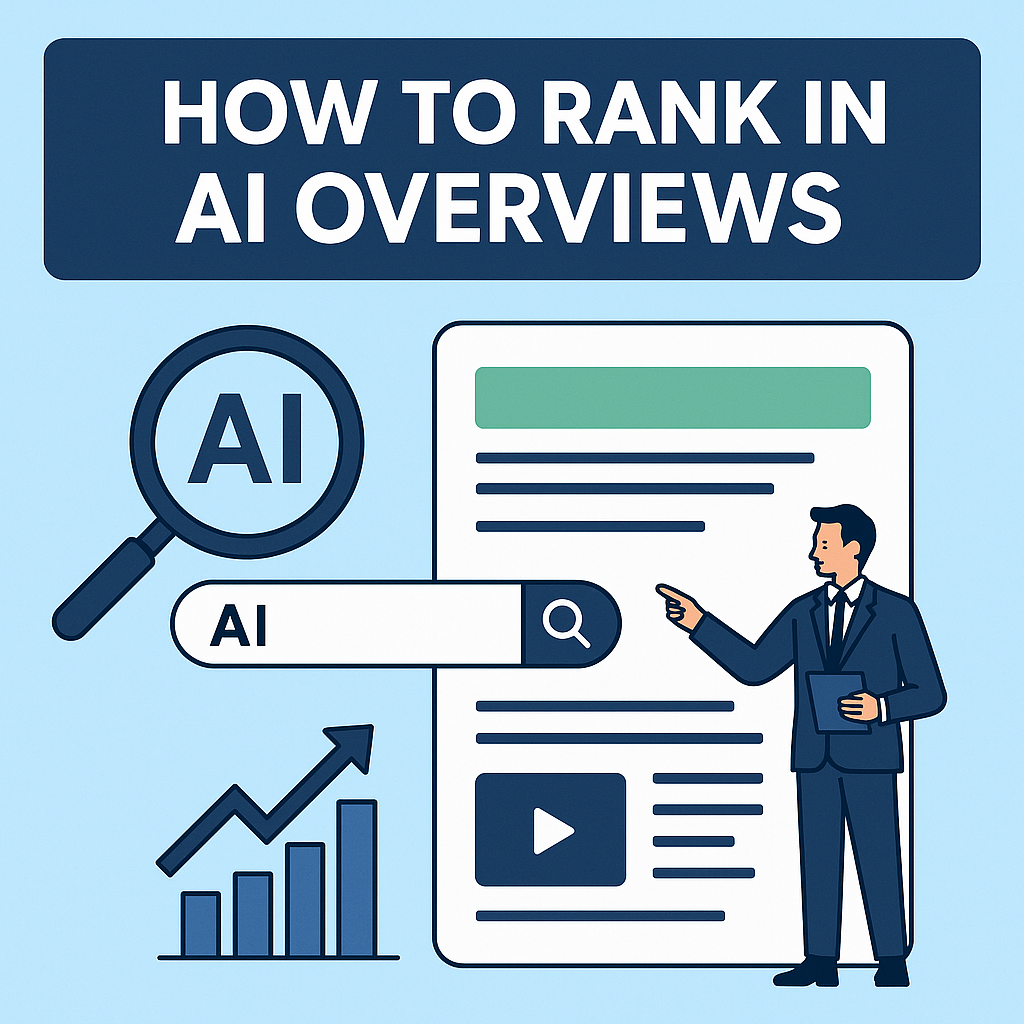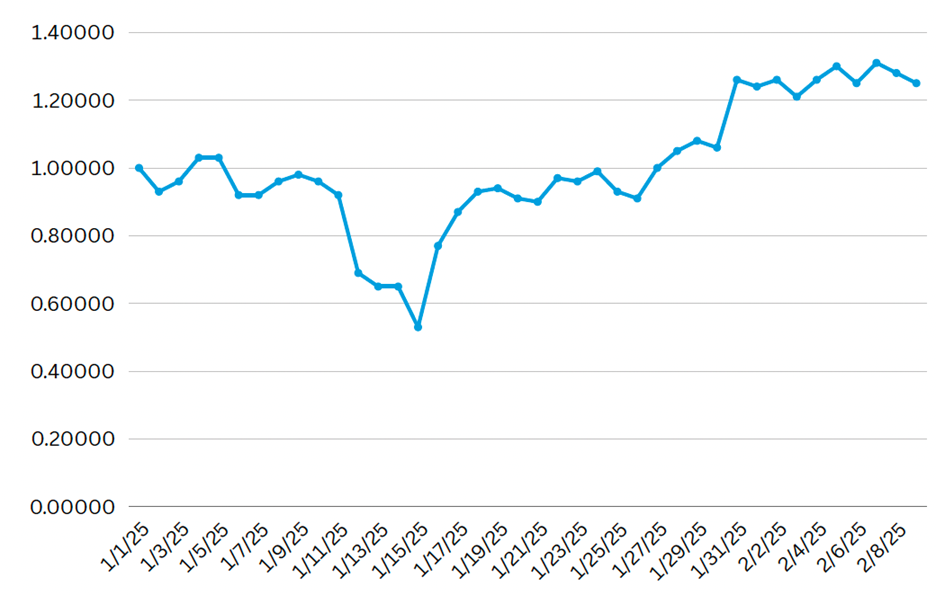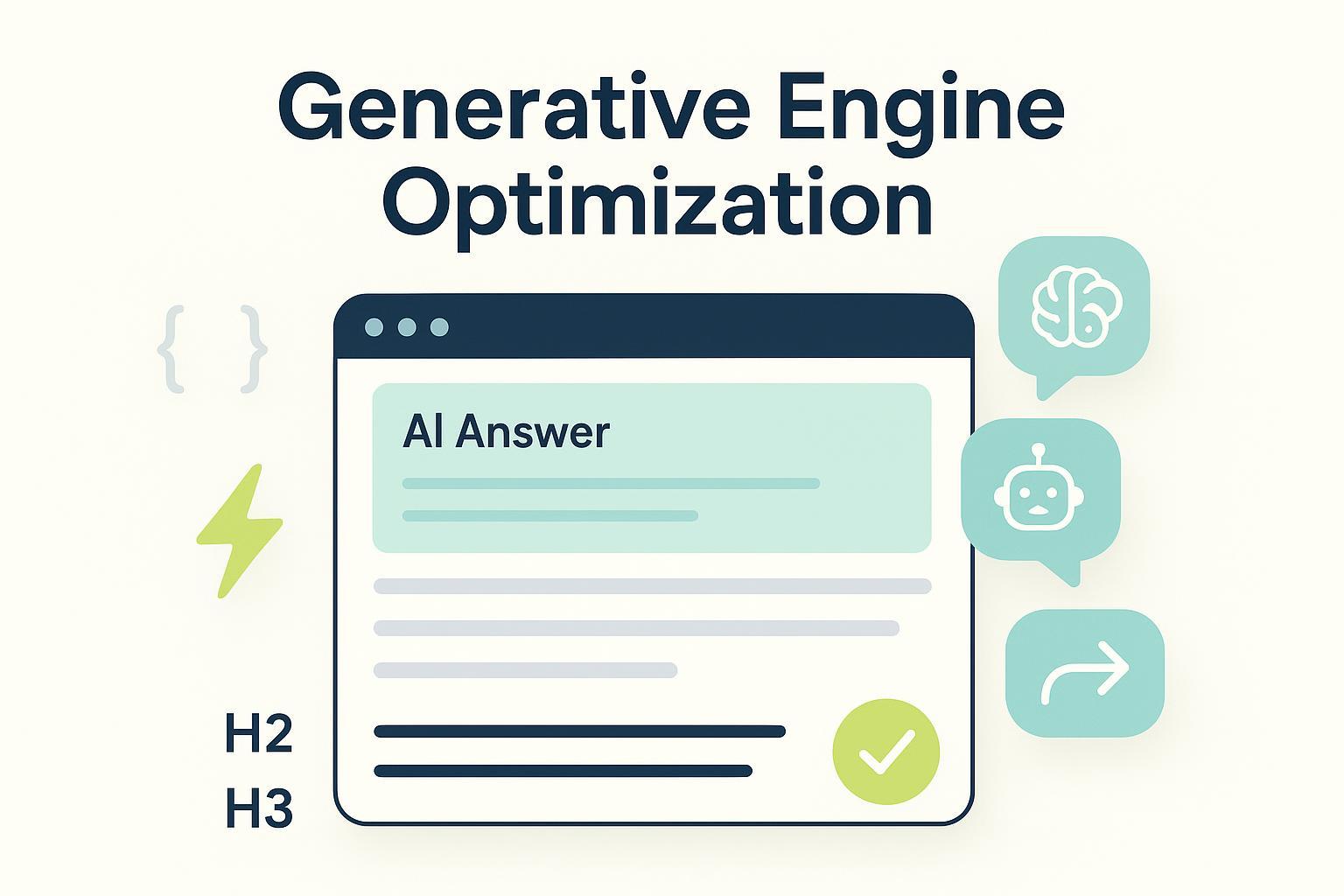How to Rank in AI Overviews: SEO for B2B Generative Search
Optimize B2B content for AI search (Google AI Overviews, ChatGPT, Perplexity). Get stats, case studies, and actionable tips to improve visibility.


The search landscape is shifting. Google’s new AI Overviews (also called AI-generated answer boxes) now surface concise, multi-source summaries atop search results, and generative answer engines like ChatGPT, Perplexity and others are also becoming go-to tools for B2B buyers. For example, one study found ChatGPT handled ~37.5 million searches per day in 2024 (vs ~14 billion on Google). BrightEdge data shows Google still commands over 90% market share, but ChatGPT usage is rapidly growing (about 21% monthly). This means businesses must now think beyond traditional SEO to “Generative Engine Optimization (GEO)” – optimizing content for these AI-powered channels.
AI Overviews and chatbots draw on high-authority web content to answer complex queries, so being featured requires meeting new criteria. As one marketing brief notes, SEO now values brand trust and expertise alongside keyword rankings. In practice, that means structuring your site and content so generative AIs recognize your authority. In the sections below, we’ll cover current AI search trends, a B2B case example, and actionable best practices (all aligned with Google’s E-E-A-T guidelines) to help B2B brands improve visibility in Google AI Overviews, ChatGPT answers, Perplexity results, etc.
AI-Powered Search Trends and Impact on SEO
AI summaries are already common. By mid-2024 Google began showing AI Overviews on many SERPs, and usage jumped quickly. In June 2023 roughly 7% of Google searches returned an AI Overview; by November 2023 that was ~20%, and some estimates suggest in tech and business verticals over one-third of queries had AI summaries. BrightEdge now reports AIOs appear in over 11% of Google queries (a 22% YOY increase). This shift is already reshaping metrics: BrightEdge data shows overall search impressions surged ~49% since AI Overviews launched, but click-through rates (CTRs) have dropped (~30% lower CTR overall) as more answers are served by the AI layer. Similar analyses (e.g. Search Engine Land) found pages with AI Overviews saw CTRs fall as low as ~5% on desktop (vs ~13% without AIO).
In short, a growing share of high-intent queries (especially technical or “how-to” questions common in B2B) are now answered directly by AI. This means organic traffic may dip unless your content itself is what the AI cites. Industries like Healthcare, Education, B2B Tech and Insurance lead in AI Overview coverage, while travel and entertainment are rising fast. Notably for B2B, sector- or product-specific long-tail queries (e.g. “how to implement containerization”) are prime candidates for AI answers.
Key Data: According to industry research, generating AI answers has driven: a 49% spike in content impressions (more people see content served), a ~30% drop in organic CTRs, and a 7× increase in very long (8+ word) queries triggering AI Overviews. In this environment, ranking #1 for a keyword is only part of the puzzle – you must aim to be cited by the AI.
The Role of Video and Multimedia
AI Overviews often include videos as well as text. In fact, BrightEdge reports that YouTube dominates video citations in Google AI Overviews. In other words, when AI summaries draw on video content, it almost always comes from YouTube. They noted that as AI Overviews rolled out, “YouTube’s AI visibility makes a compelling case for consolidating video content there” – a reminder that producing helpful videos (especially on YouTube) can boost your brand’s generative search presence.

Figure: BrightEdge analysis shows YouTube video content is increasingly cited in Google AI Overviews.
BrightEdge data even breaks out the numbers by industry. For example, ~40% of healthcare-related AI Overviews include a YouTube video source, ~30% in e-commerce, but only around 18% in B2B technology (see chart). This suggests B2B tech brands may have an opportunity: by publishing more how-to or product videos on YouTube, they can increase their chance of being featured. As one analyst put it, when optimizing for AI Overviews “incorporating video content should be a key priority”.
B2B Case Study: Structuring Content for AI
Consider this real example: a B2B digital marketing agency retooled its website to target AI-driven search. They noted that ChatGPT and Google were “pulling in content that’s extremely structured via bulleted lists, structured headings and listicle style articles”. So they added detailed FAQ sections and step-by-step lists to key service pages (e.g. an FAQ listing the “best digital PR agencies” with bullets explaining each one). Within a few months, their brand began appearing in generative results: ChatGPT’s search mode returned their page for queries like “best digital PR agencies,” and Google’s AI Overviews started showing their company as a cited source. In their own words, “Google is scraping in an FAQ we included… Google is pulling these companies in the EXACT SAME ORDER in the AI Overview”.
Takeaway: By deliberately structuring content into concise answers (with bullets, headings and FAQ-style formatting), this B2B firm became a source that generative engines recommend. This case underscores two points: 1) Well-formatted, specific answers can get picked up by AI Overviews, and 2) strategies for ChatGPT (GEO) can boost Google AI visibility too.
Strategies to Rank in AI Overviews
Based on research and expert guidance, the following best practices help improve AI Overview rankings for B2B content (aligned with Google’s E-E-A-T standards):
Use Structured, Scannable Content: AI engines favor content that is clearly organized. Break information into bullet lists, numbered steps, and short paragraphs. For example, write concise answers and key takeaways up front. BrightEdge and SEO analysts note that content optimized as lists or FAQs is more likely to be cited in AI answers.
Add FAQ/Q&A Sections: Devote parts of your site to common questions. Frame headings as questions (e.g. “What is X?” or “How to do Y?”) and provide straightforward answers. These mimic the prompts users give to AI. One guide recommends explicitly adding FAQ schema or Q&A pages so that search/AI bots find those clear Q&A pairs.
Target Long-Tail, Conversational Keywords: AI users often type or speak longer, natural-language queries. Identify “how-to” or problem-solution phrases that match your expertise. Tools like AI keyword research or monitoring “People Also Ask” trends can uncover these. Research shows queries of 8+ words are now much more likely to trigger AI Overviews (BrightEdge saw a 7× increase in such queries). Craft content that answers these specific questions.
Incorporate Video and Multimedia: As noted, YouTube videos are highly cited in AI summaries. Embed relevant videos on your pages (with good titles/descriptions) and maintain an active YouTube channel. Instructional or demo videos (e.g. product tutorials) perform especially well. This not only helps AI Overviews cite you, but also drives engagement.
Demonstrate E-E-A-T (Experience, Expertise, Authority, Trust): High-quality AI snippets tend to cite authoritative sources. Showcase your expertise by including author bylines, credentials, case studies, original research or customer success stories on your pages. Get mentions and citations from reputable sites. In short, build content that proves you are a subject-matter expert; AI algorithms are trained to trust recognized experts and brands.
Technical SEO and Schema: Maintain strong technical SEO fundamentals. Ensure all important text is crawlable (avoid hiding it in scripts or images). Optimize page speed and mobile friendliness. Use schema markup (e.g. FAQ schema) to structure information for both Google Search and AI parsers. Consistent brand data (NAP, trusted contact info) and secure site protocols also reinforce trust.
Prioritize Brand Visibility: AI answer engines often default to known, authoritative brands. As one SEO expert advises, building your brand’s presence (through PR, thought leadership, partnerships) increases the chance you appear in AI results. In practice, that means diversifying content formats (videos, webinars, interactive tools) and leveraging first-party channels so your brand becomes a familiar answer source.
Monitor and Iterate with AI SEO Tools: Use tools designed for generative search. For example, Geneo.app provides detailed GEO/AEO analytics – tracking how your site performs in ChatGPT, Perplexity, and Google AI Overviews. It benchmarks your visibility against competitors and tells you which queries trigger AI answers. Geneo also offers AI-powered content recommendations to optimize pages for generative search. By regularly testing your content in ChatGPT or Perplexity and measuring the results, you can refine your strategy (for instance, adjusting keywords or adding snippets) over time.
Leveraging Geneo.app for AI Search Success
To stay on top of AI-driven search visibility, specialized platforms like Geneo.app can be invaluable. Geneo’s “AI Search Visibility” suite helps B2B marketers do exactly what’s needed to rank in AI Overviews:
GEO Analytics: Tracks how often your site is cited in AI answers (ChatGPT, Perplexity, Google AI Overviews), and the keywords triggering those citations. You can see which pages or competitors are winning the AI answer box.
AEO Diagnostics: Evaluates how well each page’s content fits AI search. It highlights gaps (e.g. missing FAQs or structured data) and scores your AI-friendliness.
Content Recommendations: Provides AI-driven suggestions for improving content (keywords, headings, length) specifically for generative search engines. It’s like SEO advice tuned to GPT-style queries.
In short, Geneo helps you monitor and optimize your brand’s performance across all major AI answer engines. This lets you base decisions on real data (e.g. “Our page is cited in ChatGPT for X query but not for Y query”) rather than guesswork. Many companies now use such tools to stay ahead in AI SEO.
Conclusion
The era of AI-driven search is here, and B2B marketers must adapt. Ranking on Google’s classic blue-link SERP is no longer enough – you need to become a trusted answer in AI summaries as well. Key steps include restructuring content into clear answers (bullets, FAQs), targeting conversational long-tail queries, and reinforcing your expertise and brand authority. Incorporating multimedia (especially YouTube videos) can also extend your reach into AI Overviews.
Throughout, follow Google’s E‑E‑A‑T principles: write with authority, cite credible sources, and be transparent about who’s creating the content. Use schema markup to make your content machine-readable, and maintain strong technical SEO. Finally, leverage new analytics tools (like Geneo.app) to measure how AI engines see your brand and identify opportunities for improvement.
By combining these tactics with the latest data, a B2B company can not only mitigate the “zero-click” impact of AI Overviews, but even turn AI into a new source of visibility. In other words, smart marketers will treat generative AI as a new channel: optimize your content for it, and you’ll find your brand surfacing where buyers are now searching.





